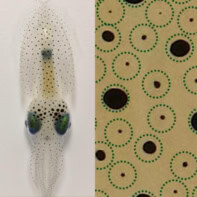
A precise topographic map of the representation of touch in area 3b of the somatosensory cortex – a region thought to only respond to mechanical stimulation – was produced when a subject observed someone else’s fingers being touched. Researchers from the UK (UCL) and Germany (Magdeburg, Leipzig and Bochum) used functional MRI (fMRI) to show that such “foreign source” maps were consistent with maps produced following actual tactile stimulation: they overlapped in the same areas, albeit they were weaker in fMRI signal amplitude (J. Neuroscience 10.1523/JNEUROSCI.0491-17.2017).
This research delves deeper into the multisensory properties of different cortices, and may have implications for studies of cortical plasticity – the brain’s ability to reorganize in response to trauma or learning.
Previous studies have shown that sensory cortices in the brain can receive inputs from other sensory systems, for example visual activity in response to sound or touch. It is unknown, however, to what degree, and to what specificity, these foreign sources activate sensory cortices.
The auditory, somatosensory (tactile) and visual cortices have detailed spatial organization. For instance, sub-regions of the somatosensory cortex that respond to finger touch lie next to each other in a neat pattern. Here, the researchers employed ultra-high-resolution (7 Tesla) fMRI to investigate whether area 3b responds when a subject observes someone else’s fingers being touched, and if so, whether there is specific finger organization.
Observing touch
The fMRI procedures involved two visual sessions and one tactile session. In the visual session, participants viewed someone else’s fingers being touched in a “phase encoded” design (stimulation of consecutive fingers) in a first-person perspective. The phase angle of the response was used to visualize the finger being stroked, producing “finger-phase” maps.
The visual experiment was repeated using a blocked design, in a third-person perspective; this was used to see whether visually-driven maps were only produced after observing “self-referenced” touch (first person), and whether the maps were robust across fMRI design/analysis. In the tactile sessions, the participant’s fingers were stimulated by sandpaper, in both phase-encoded and block design, separately.
Additionally, a separate group of participants underwent electromyography (EMG) to measure the small electrical currents produced following muscle movement. The researchers performed this experiment to verify whether the maps produced while observing touch were confounded by involuntary finger movements. They found that observing touch did not trigger muscle activity.



